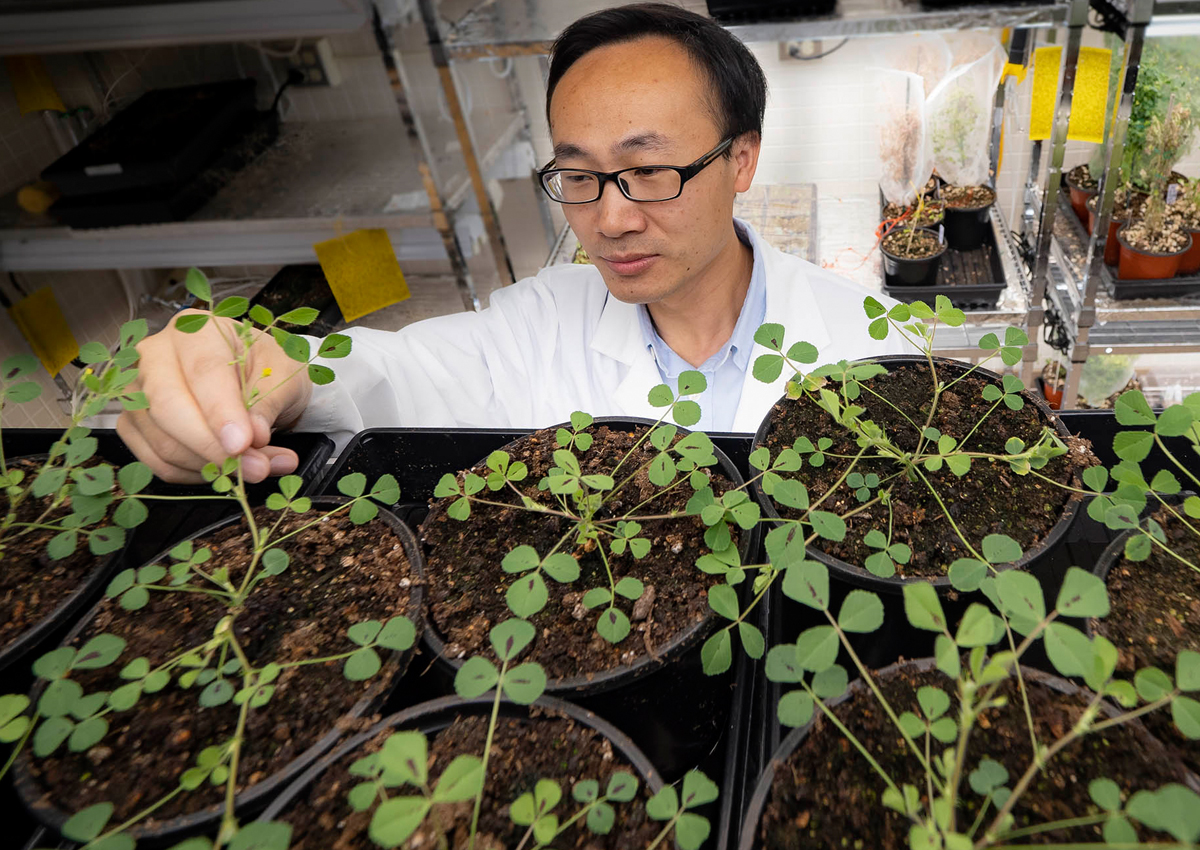
Scientists in the US and UK to Uncover Role of Microbes in Plant Immunity
October 20, 2022| |
Oklahoma State University scientist and assistant professor Feng Feng is studying how beneficial microorganisms are helping plants acquire nutrients. Microbes infect plant roots to establish a mutually beneficial relationship with the plant called symbiosis, a relationship that provides plants with essential nutrients, such as nitrogen and phosphorus.
Like people, plants are naturally exposed to a wide variety of microorganisms. Some of these microorganisms are good, some are bad, and they have an immune system that triggers defense responses to limit infection. To establish this symbiotic relationship with plants, microbes suppress a plant's immune system. Feng said microbes can produce signal molecules called lipo-chitooligosaccharides (LCOs) that are recognized by a plant receptor called NFP. This recognition triggers symbiosis, which hinders the plant's immunity to infection.
Feng said that what they want to know is how microbes use LCOs to hinder immunity to plant infections. So he and his colleagues at the University of Cambridge in the United Kingdom will work on the legume Medicago truncatula along with barley to understand the molecular process that causes root microbes to suppress immune systems in plants. According to Feng, the project will identify a set of plant genes that are required for LCOs to suppress plant immune systems. Once the genes have been identified, Feng and his colleagues hope to place them into barley to determine if they enhance the plant's ability to take in soil nutrients and fight Fusarium graminearum, a fungal disease that causes head blight in small-grain cereals.
For more details, read the article on the Oklahoma State University website.
| |
You might also like:
- Researchers Edit Genomes of Microbes Growing in a Community of Different Species
- Plant Immune Sensors Found to Navigate Against Invading Microbes Inside Plant Cells
- NTU Researchers Identify How Xanthomonas Bacteria Infect Plants
Biotech Updates is a weekly newsletter of ISAAA, a not-for-profit organization. It is distributed for free to over 22,000 subscribers worldwide to inform them about the key developments in biosciences, especially in biotechnology. Your support will help us in our mission to feed the world with knowledge. You can help by donating as little as $10.
-
See more articles:
-
News from Around the World
- OFAB-Kenya Celebrates Excellence in Science Journalism amid Rising Concern on Misinformation
- Agbiotech Awareness Promoted Among Media and Communication Practitioners in Vietnam
- Philippine National Biotech Week Activities Kick Off With Updates on Bt Corn, Golden Rice
- Filipino Scientists Gear Up for Media Interviews to Promote Biotech R&D
- 5th Asian Short Course on Agribiotech, Biosafety Regulation, and Communication (ASCA5)
- Australia Approves Commercial Release of GM Indian Mustard
- Pre-COPMOP 2022: Asian Regional Workshop on Current and Upcoming Items Under the CBD and its Protocols
-
Research Highlights
- Scientists in the US and UK to Uncover Role of Microbes in Plant Immunity
-
Read the latest: - Biotech Updates (December 17, 2025)
- Gene Editing Supplement (December 17, 2025)
- Gene Drive Supplement (February 22, 2023)
-
Subscribe to BU: - Share
- Tweet

